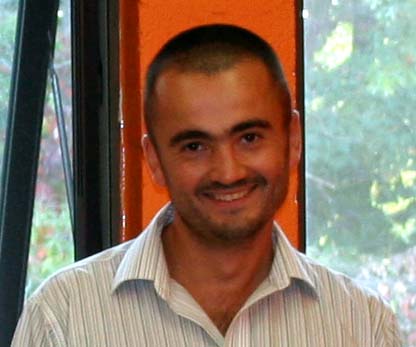Tutorials
Two co-located tutorials will be held on the afternoon of
Wednesday, 20 May 2009:
A Quick Intro to Trusted Hardware
Radu Sion
Stony Brook Trusted Hardware Lab
sion@cs.stonybrook.edu
Increasingly, modern networked storage and computation services are
fundamentally vulnerable to faulty behavior and malicious compromise.
In online, un-trusted environments, security, privacy and correctness
assurances become essential functionality requirements. However,
achieving such assurances efficiently is extremely challenging.
Scalability requirements often do not allow for centralized points of
trust, while distributed alternatives are rarely practical due to
large computation and communication overheads.
The advent of general-purpose trustworthy hardware offering
tamper-resistance and reactivity, allows for fundamentally new
paradigms of trust. Trust chains spanning untrusted and possibly
hostile environments can now be built by deploying such secure
tamper-proof hardware at the service processing components' site. The
trusted hardware will run certified logic on behalf of clients; close
data-proximity coupled with tamper-resistant guarantees allow an
optimal balance and partly de-coupling of the efficiency-security
trade-off. Long speculated about technology has now matured to enable
such applications. Computing can now be both efficient and secure.
In this tutorial we explore hardware deployed in the design and
implementation of trusted, efficient, and scalable computing. We
discuss known vulnerabilities and attacks, adversarial and deployment
models for hardware ranging from simple TPM micro-controllers and
smart-cards, ARM TrustZone components, on-disk encryption mechanisms
such as Seagate's Full Disk Encryption (FDE) units, to full-fledged
FIPS 140-2 Level 4 certified IBM 4758 and the newer IBM 4764 PCI-X
cryptographic coprocessors. Time-permitting we will also provide a
hands-on programming session for IBM 4758 SCPUs.
An important part of the tutorial will lie in conveying the insights
of how practical limitations of trusted hardware devices pose a set
of significant challenges in achieving sound assurances in practical
applications in financial (trading systems, online banking, ATMs),
commercial, governmental and defense applications. Specifically, heat
dissipation concerns under tamper-resistant requirements limit the
maximum allowable spatial gate-density. As a result, e.g.,
general-purpose secure co-processors (SCPUs) are often significantly
constrained in both computation ability and memory capacity, being up
to one order of magnitude slower that host CPUs. We will explore how
to achieve efficiency in this setting by designs accessing secure
hardware sparsely, asynchronously from the main data flow.
Speaker
 Radu Sion is an assistant professor of Computer Science in Stony
Brook University, heading the Network Security and Applied
Cryptography Laboratory. His research focuses on data security and
practical information assurance mechanisms. Sion also directs the
Stony Brook Trusted Hardware Laboratory, a central expertise and
research knowledge repository on secure hardware.
Radu Sion is an assistant professor of Computer Science in Stony
Brook University, heading the Network Security and Applied
Cryptography Laboratory. His research focuses on data security and
practical information assurance mechanisms. Sion also directs the
Stony Brook Trusted Hardware Laboratory, a central expertise and
research knowledge repository on secure hardware.
Models and Methods for Disclosure Limitation
Johannes Gehrke (Cornell University) and Ashwin Machanavajjhala (Yahoo! Research)
The digitization of our daily lives has led to an explosion in the
collection of data by governments, corporations, and
individuals. Protection of confidentiality of this data is of utmost
importance. However, knowledge of statistical properties of this private
data can have significant societal benefit, for example, in decisions
about the allocation of public funds based on Census data, or in the
analysis of medical data from different hospitals to understand the
interaction of drugs. This tutorial will survey recent research that
builds bridges between the two seemingly conflicting goals of sharing
data while limiting disclosure. The tutorial will cover definitions of
disclosure and associated methods how to enforce it. We also show how
definitions of disclosure for data privacy can be modified to
applications traditionally considered in this conference, such as
anonymous routing.
Part I: Privacy definitions
- Measures of anonymity - k-anonymity: record linkage and estimating uniques in
population
- Modeling privacy and adversarial background knowledge: l-diversity,
worst case background knowledge and privacy skyline, alpha beta
privacy, differential privacy, perfect privacy and its relation to
access control, epsilon-privacy framework and discussion on when to use which definition.
- Composability and the problem of multiple releases
Part II: Anonymization Algorithms
- Offline: Generalization, synthetic data generation
- Online: noise addition








